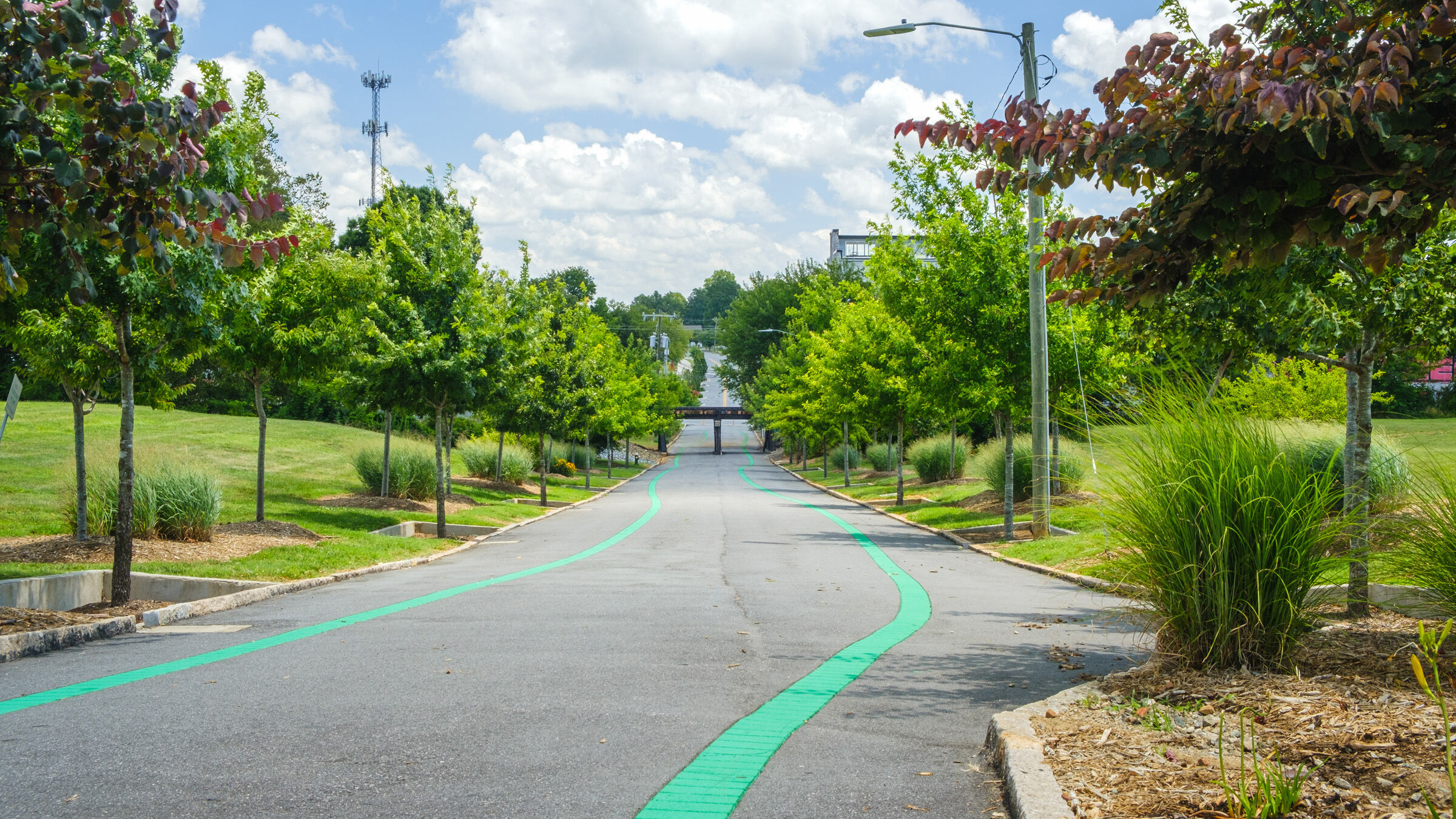
History
The Downtown Greenway is a public-private partnership between Action Greensboro and the City of Greensboro. This ambitious and complicated project has been led on the private side by foundations, local leaders, and community partners. Joining this effort, the City of Greensboro has committed many staff members from numerous departments to help make this happen. While many accomplishments over the years are to be celebrated, some key milestones are highlighted below.
2001
Greensboro set its sights on reimagining its urban core. Under the leadership of Susan Schwartz, Action Greensboro commissioned Rich Flierl and the Cooper Carry Center for Connective Architecture to create a master plan for the city center. The Downtown Greenway was identified as a key component of the plan.


2002
Action Greensboro recognized that turning the Downtown Greenway from concept to reality would require strong partnerships and leadership. Bob Newton, president of the Cone Health Foundation, was asked to lead the charge.
2003
Action Greensboro formed the Downtown Greenway volunteer committee, led by Trip Brown. A visionary paper created by Greenways Inc. laid out plans for local and regional greenways. Community leaders visited Norfolk Southern in Roanoke, Virginia to explore the possibility of transforming an old railroad line into a vibrant part of the Downtown Greenway.


2004
The project gained momentum as the Cone Health Foundation pledged $500,000 for conceptual design work and the creation of a Master Trails Plan for the City. Greensboro’s City Council expressed interest, too. Action Greensboro partnered with other local organizations, forming the Greensboro Partnership and strengthening the project’s foundation.
2005
The Downtown Greenway began to take shape in the public eye. Preliminary designs were unveiled to the community. Inspired by a visit to Greenville, South Carolina, city leaders returned with fresh ideas and renewed enthusiasm. As the master plan for Greensboro’s trails took form, the Downtown Greenway’s vision was presented to the City Council.

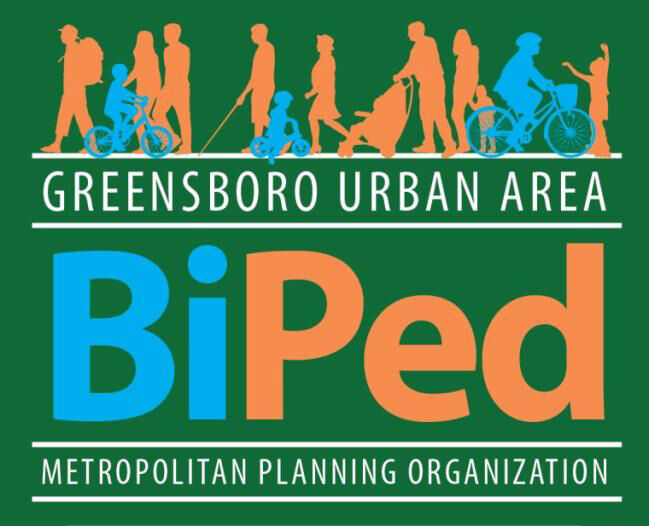
2006
The Downtown Greenway found its place in Greensboro’s future as the City Council adopted the comprehensive Greenways and Trails Master Plan. The project was chosen as Greensboro’s Bicentennial signature project, intertwining the city’s past and future.
2007
With official support from the City Council, the Downtown Greenway shifted into high gear. Dabney Sanders joined as the first dedicated staff member, bringing focus and drive to the project. Susan Schwartz, president of The Cemala Foundation and member of the Action Greensboro Operating Group, led the fundraising committee.
- The Downtown Greenway committee expanded to include representatives from the Bicentennial Commission (Cathy Levinson and Robby Hassell) and other community leaders.
- Trip Brown continued as chair and John McLendon served as vice-chair.
- Work continued toward developing the first section of the Downtown Greenway between Freeman Mill Road and Eugene Street (known as Five Points).
- The NC Health & Wellness Trust Fund awarded a $60,000 grant to Action Greensboro/City of Greensboro/Guilford County Department of Public Health.
- The City’s Bicentennial Commission donated $60,000 to support marketing efforts for the Downtown Greenway.
- Boulton Creative and RLF Communications are hired to create a logo and marketing plan.
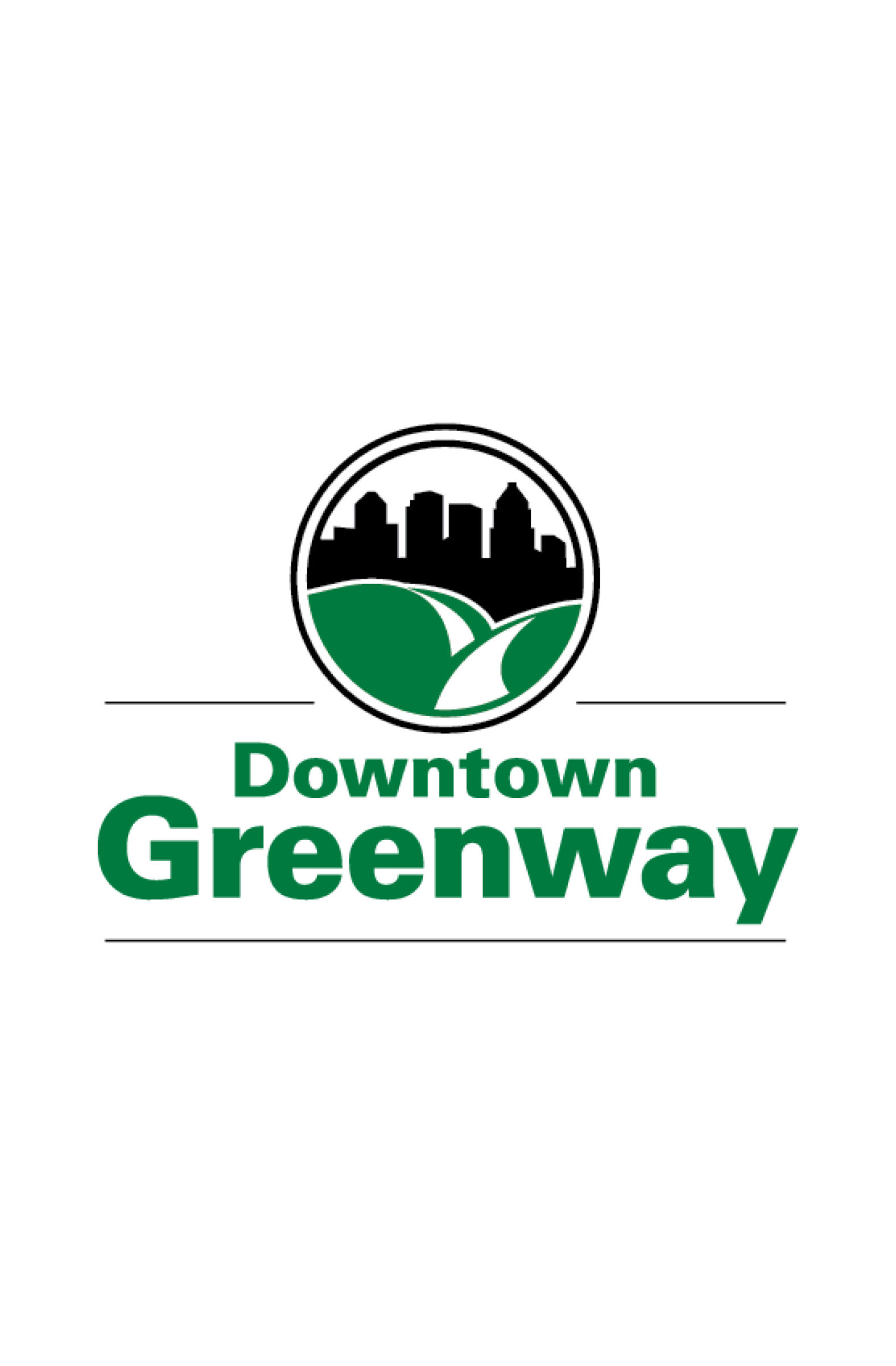

2008
Local foundations rallied behind the Downtown Greenway, with four major donors pledging a combined $4.5 million, contingent on the passage of a city bond referendum. When voters overwhelmingly approved the Transportation Bond, it secured the private funds and an additional $7 million in public money. With $12 million now available, the project moved forward.
- The Cemala Foundation provided the first significant gift and pledged $1.5 million.
- The Bryan Foundation pledged $1 million.
- The Weaver Foundation pledged $1 million.
- The Cone Health Foundation pledged $1 million.
- Laura Lorenz is hired as the part-time Downtown Greenway administrative assistant.
- Barbara Peck is hired as the Downtown Greenway public art consultant.
2009
The Downtown Greenway began its physical transformation as ground was broken on the first section. An agreement with NC Railroad Company secured an important overpass, solving a key connectivity challenge. The first public art pieces were commissioned, adding cultural flair to the Downtown Greenway.
- Tannenbaum-Sternberger Foundation pledged $100,000.
- Brower Hatcher, Gary Gresko and Erik Beerbower are commissioned to create public art for the Downtown Greenway.


2010
Excitement builds as the first quarter-mile section of the Downtown Greenway opened to the public. National recognition came from a grant from the National Endowment for the Arts. The inaugural Run 4 the Greenway event brought the community together, fostering a sense of ownership and celebration around the new urban amenity.
- Kate Phillips is hired as the part-time Downtown Greenway bookkeeper.
- April Harris served as the chair of the Downtown Greenway finance committee.
2011
Momentum continued to build as ground was broken on the second quarter-mile section. A milestone was reached with the approval of a significant road closure, demonstrating the city’s commitment to the project. The Metropolitan Planning Organization (MPO) showed its support by dedicating almost $1 million in federal funding for design work.
- Action Greensboro launched a Major Gifts Campaign to raise $2.5 million.
- Ben Kastner, Toby Keeton, Jim Gallucci, Scott Richardson and Jeannette Brossart are commissioned to create public art for the Downtown Greenway.
- Laura Lorenz, an administrative assistant, became the Downtown Greenway campaign manager.
- The Warnersville Historical and Beautification Society adopted the Five Points Trail.


2012
The year marked significant progress as Morehead Park and Gateway of the Open Book were dedicated. The Major Gifts Campaign raised more than $5 million, pushing the total funding for the Downtown Greenway above $18 million. Action Greensboro purchased property for the Tradition Cornerstone, ensuring Downtown Greenway’s vision could be fully realized.
- The Metropolitan Planning Organization (MPO) directed $3 million in federal funds for Northern Passage construction.
- Primary Flight and Harries + Heder Collaborative are commissioned to create public art for the Downtown Greenway.
- Sherrie Simpson was hired as the Downtown Greenway bookkeeper.
2013
The Downtown Greenway continued to grow, with the third quarter-mile opening on Smith Street. A major boost came from the Phillips Foundation, which pledged $1.5 million to the project. Innovative stormwater facilities were integrated into the design, showcasing the Downtown Greenway’s commitment to environmental sustainability.
- Trail counters on the Downtown Greenway are installed (on Five Points and on Morehead Park).
- Guilford College students Will Kimmel and Kim Cannan created public art for the Downtown Greenway during Mark Dixon’s sculpture studio class.
- Withers & Ravenel won the Engineering Excellence Award for Design of the Northern Passage section of the Downtown Greenway from the American Council of Engineering Companies.


2014
Meeting Place at Tradition Cornerstone opened, providing a new gathering space for the community. Behind the scenes, negotiations continued with Norfolk Southern for the railroad corridor, while public meetings for the Southern Trace design ensured the community’s voice remained central to the project.
- Trip Brown is chair of the finance committee.
- The 5th annual Run 4 The Greenway is held.
2015
As designs were completed for the Eastern Way and Southern Trace sections, the Western Branch began to take shape with the start of functional design work. The artistic vision of the Downtown Greenway expanded with the selection of Randy Walker for the Innovation Cornerstone. In a nod to environmental stewardship, a partnership was formed to create a pollinator garden, adding ecological value to the urban green space.
- Partners for the pollinator garden included:
- T. Gilbert Pearson Audubon Society, Piedmont Bird Club, Guilford Chapter of the NC Native Plant Society, Carolina Butterfly Society, NC Xerces Society, faculty and students from N.C. A&T and UNCG, Peacehaven Farm, Greensboro News & Record and consulting advice from the Greensboro Permaculture Guild
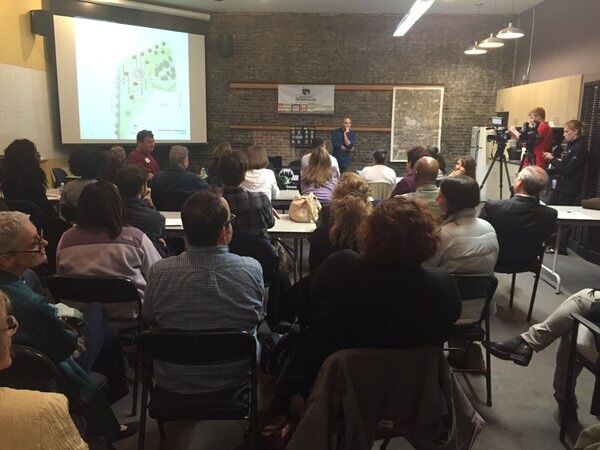

2016
The Downtown Greenway received a significant boost as voters passed a Parks & Recreation Bond, dedicating $7 million to the project. Woven Works Park at Innovation Cornerstone opened, offering a new interactive space for the community. Construction began on parts of Southern Trace and Northern Passage.
- The Community Foundation of Greater Greensboro donated $100,000 in honor of its Building Stronger Neighborhoods program.
- Appraisal of railroad corridor as part of Norfolk Southern negotiations is completed.
- A contract was awarded for construction on part of Southern Trace.
- Construction began on part of Northern Passage (except for the section on Smith Street between Prescott and Spring because of complications related to the retaining wall).
- The National Endowment for the Arts published “How to do Creative Placemaking” and the Downtown Greenway was one of the 13 case studies included for connecting neighborhoods through public art.
2017
With funding now surpassing $38 million, the Downtown Greenway’s vision continued to expand. The Wheels on the Greenway event donated 75 bikes and 12 helmets to children in need. Construction progressed on various sections. UNCG and the city launched the East Coast’s first dockless bike share system (LimeBike), complementing the Downtown Greenway’s mission of promoting complete transportation.
- $7.8 million was secured for the construction of Eastern Way from federal funds directed by the Metropolitan Planning Organization (MPO) and N.C. Department of Transportation (NCDOT).
- Successful negotiation with Mahlon Honeycutt at 429/431 Cedar Street to lease property that leads to a solution for retaining wall needs on Northern Passage between Spring and Prescott.
- Randy Walker fabricated two bus shelters for Eastern Way: one on Lindsay Street between Murrow and Cumberland; and the other on Murrow, between Lindsay and Friendly.
- Kimley Horn began engineering design work on the railroad corridor (Western Branch).
- Grounded Here gifted to and moved to the Salvation Army Royce and Jane Reynolds Center for Worship and Service and Boys & Girls Club.
- Vandorn Hinnant is commissioned to create public art for the Downtown Greenway.


2018
This year saw the opening of LoFi Park and surrounding Northern Passage, along with the completion of Southern Trace construction between Eugene Street and Martin Luther King Jr. Drive. As Eastern Way went out to bid again, the project’s impact was evident, with a partnership to celebrate the groundbreaking during N.C. A&T’s annual Homecoming.
- Bob Newton retired as chair of the finance committee and David Worth took his place.
- An average of 3,300 people per month used the open sections of the Downtown Greenway; 32 community meetings and events were held serving 1,388 people; and more than 300 volunteers were engaged with Downtown Greenway activities with more than 800 volunteer hours contributed.
2019
A major milestone was reached with an agreement with Norfolk Southern for conversion of the railroad corridor to trail. The Southern Trace section was celebrated with a ribbon cutting, while construction began on Eastern Way. VF Corporation’s $1.5 million legacy gift underscored the project’s importance to the business community. As the artist selection process for the Freedom Cornerstone began, the Downtown Greenway’s role as a canvas for public art continued to grow.
- $7 million in public funding is secured for railroad acquisition.
- The 10th annual Run 4 the Greenway is held.
- Laura Lorenz becomes a full-time employee and is responsible for the Downtown Greenway campaign, communications and programming.
- An average of 3,100 people per month used the open sections of the Downtown Greenway; 68 community meetings and events were held serving 2,050 people; and more than 300 volunteers were engaged with Downtown Greenway activities, providing more than 800 hours of service.
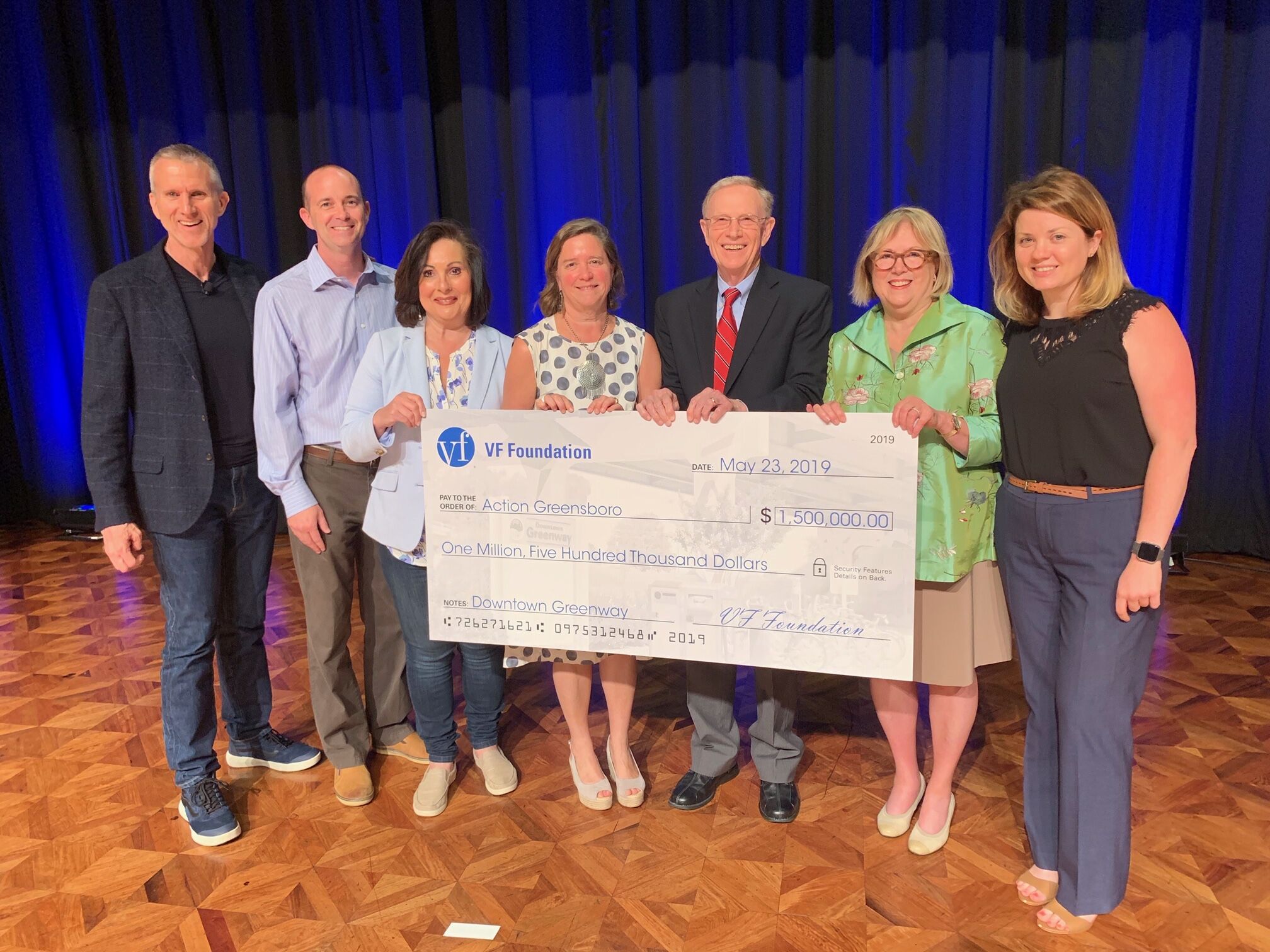
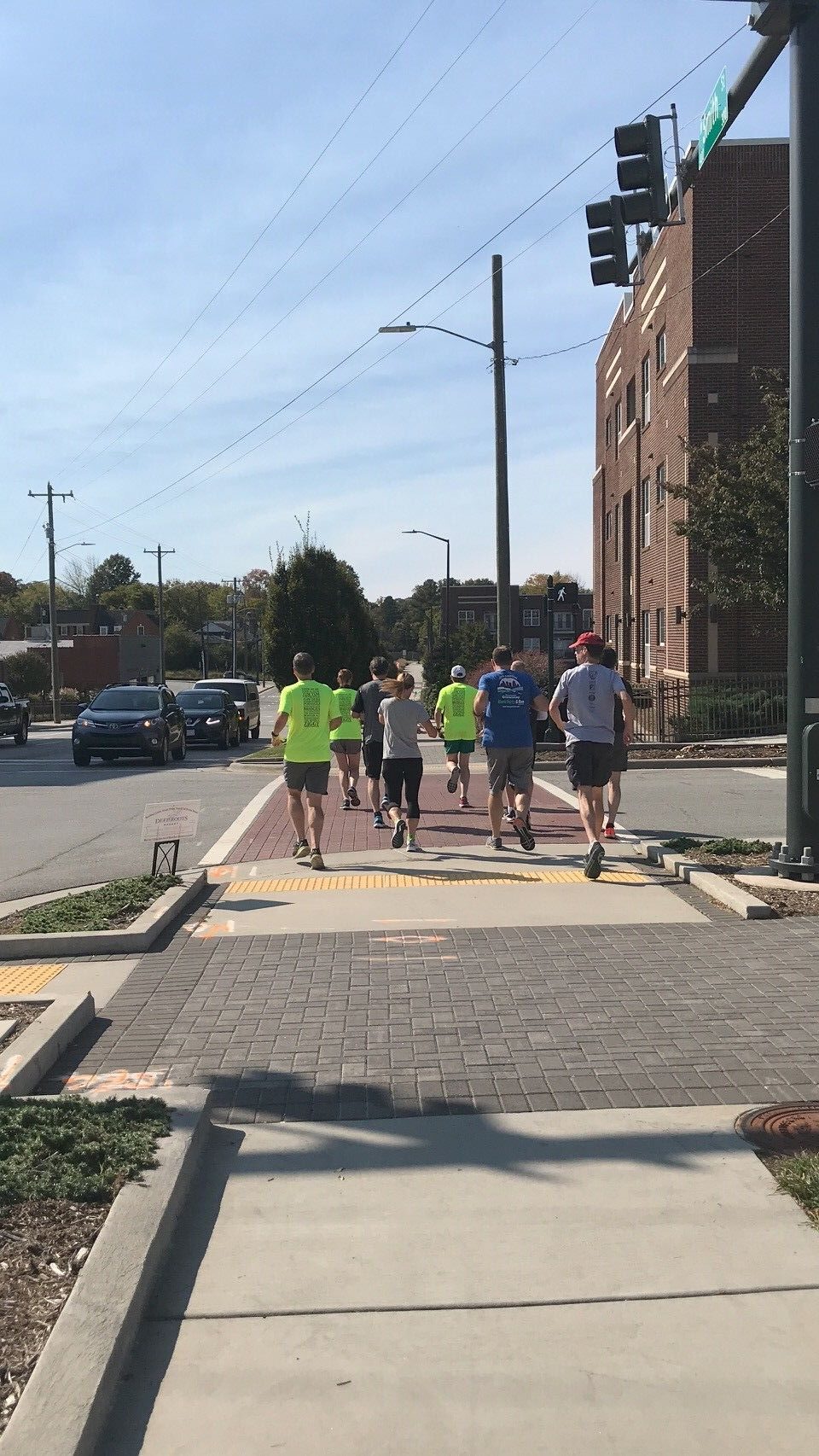
2020
Despite the challenges posed by the global pandemic, the Downtown Greenway project pushed forward. Even though virtual events replaced in-person gatherings, the Downtown Greenway’s importance was underscored as an average of 3,000 people per month continued to use the open sections, seeking outdoor respite during difficult times.
- Clean Water Management Trust Fund awarded the Downtown Greenway $400,000 for additional stream restoration of the College Branch Stream on the Western Branch.
- Radcliffe Bailey, Thomas Sayre and Darlene McClinton were commissioned to create public art for the Downtown Greenway.
- Even though the Wheels on the Greenway was canceled, the Downtown Greenway team collected, repaired and donated more than a hundred bikes to children.
- The Run 4 the Greenway Virtual Challenge and Scavenger Hunt was held in October, with more than a hundred participating.
- Despite adjusted programming because of COVID-19, an average of 3,000 people per month used the open sections of the Downtown Greenway; 47 community meetings/events were held virtually and in-person serving more than 7,000 people; more than 230 volunteers were engaged with Downtown Greenway activities with more than 775 hours served.
2021
The Final Mile Campaign raised more than $1 million, pushing total funding past $50 million. As construction on Eastern Way wrapped up, three of the four miles were now open to the public. In a nod to biodiversity, a beehive was installed at Meeting Place, further integrating nature into the urban landscape.
- The Metropolitan Planning Organization (MPO) and N.C. Department of Transportation (NCDOT) directed $3.5 million in federal funds for Western Branch construction, as well as an additional $2.7 million in MPO-directed federal funds for Western Branch construction.
- The Safe States Alliance for Injury and Violence Prevention awarded the Downtown Greenway a grant of $25,000. In cooperation with the Greensboro Department of Transportation and UNCG Department of Public Health Education and UNCG Center for Housing and Community Studies, the Downtown Greenway created a framework for evaluation with the input of several community stakeholders.
- Nico Amortegui and Sharon Dowell were commissioned to create public art for the Downtown Greenway.
- LoFi Park underwent a major renovation thanks to the work of permaculture designers, David Mudd and Justin Vettel.
- Downtown Greenway’s team continued to work with the city’s transition team to ensure a smooth transition of full operations of the Downtown Greenway to the City of Greensboro when construction on the full 4-mile loop is complete (expected in 2025).
- Despite continued restrictions due to COVID-19, an average of 8,000 people per month used the Downtown Greenway; 68 community meetings and events were held serving more than 5,000 people; and more than 200 people were engaged as volunteers with more than 600 hours served.
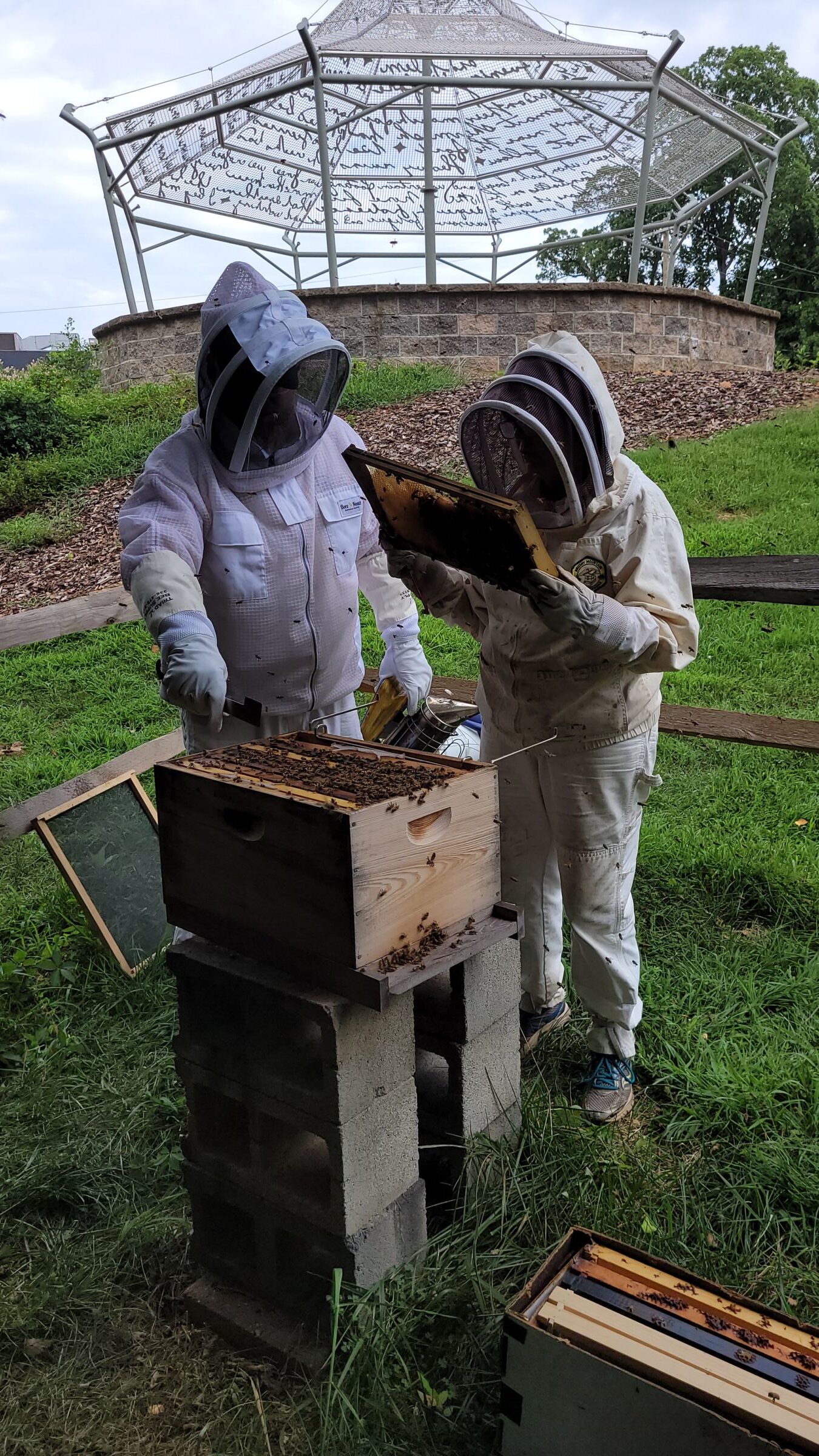
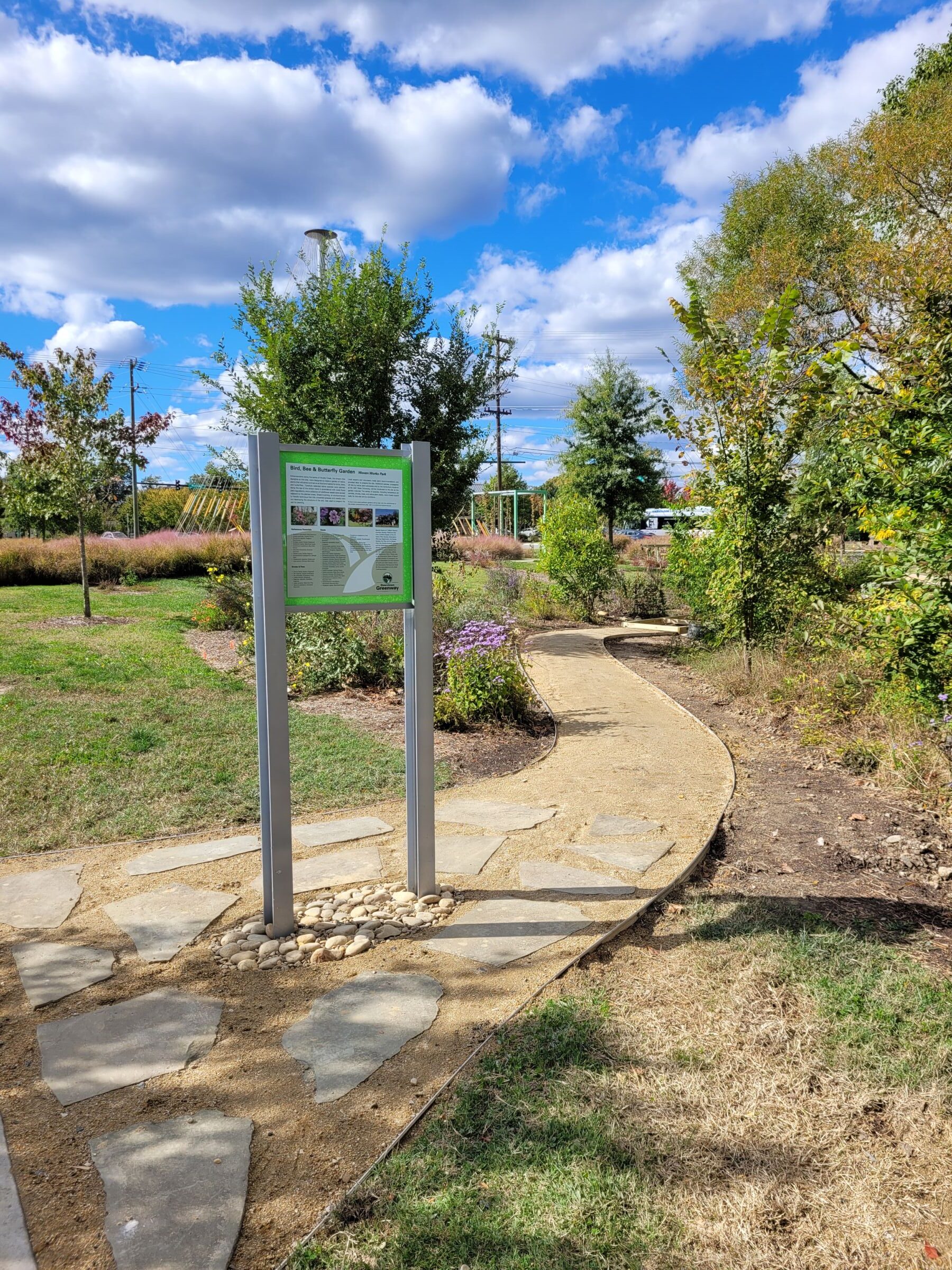
2022
The Downtown Greenway entered a new phase as programming transitioned to the City of Greensboro, ensuring long-term sustainability. Recognition came from the NC Chapter of the American Planning Association, highlighting Downtown Greenway’s impact on urban planning. Usage soared to more than 117,000 trail users for the year.
- A $20,000 grant was awarded to the Downtown Greenway by the Safe States Alliance for Injury and Violence Prevention.
- Chelsea Phipps was hired as Greenway and Gardens program coordinator in the City of Greensboro’s Parks & Recreation Department.
- Jim Gallucci was commissioned to create public art for the Downtown Greenway.
- Gigi Renaud joined as treasurer and chair of the finance committee.
- The Bird, Bee, and Butterfly Pollinator Garden underwent a transformation adding a series of pathways, a small bridge and a natural stone staircase leading to the Muddy Creek stream.
- Permaculture gardeners David Mudd and Justin Vettel are commissioned to create a garden along the Northern Passage between Spring Street and Prescott Street.
- An average of 9,770 people per month used the open sections of the Downtown Greenway; there were 156 programs and events supported by community partners; 217 volunteers gave 649 hours; 19,235 total followers across social media accounts; and 2,636 e-newsletter subscribers.
2023
The Freedom Cornerstone was dedicated, marking a significant milestone in Downtown Greenway’s artistic vision. Trail usage continued to climb, with nearly 118,000 visitors for the year. As the Western Branch went out to bid for construction, new public art pieces were commissioned and installed. The project also participated in the Year of the Trail initiative, connecting Greensboro’s efforts to a broader statewide movement.
- The Metropolitan Planning Organization (MPO) directed $4.7 million in federal funds for Western Branch construction.
- The Otocast audio guide was introduced, providing trail users with audio, photos and text describing public art and features along the Downtown Greenway.
- Paul Evans, Waller Foushee Studios and Allie Crawford were commissioned to create public art for the Downtown Greenway.
- An average of 9,829 people per month used the open sections of the Downtown Greenway; over 200 community meetings and events were held serving more than 2,509 participants with 139 community partners; and 205 volunteers contributed 633 hours.
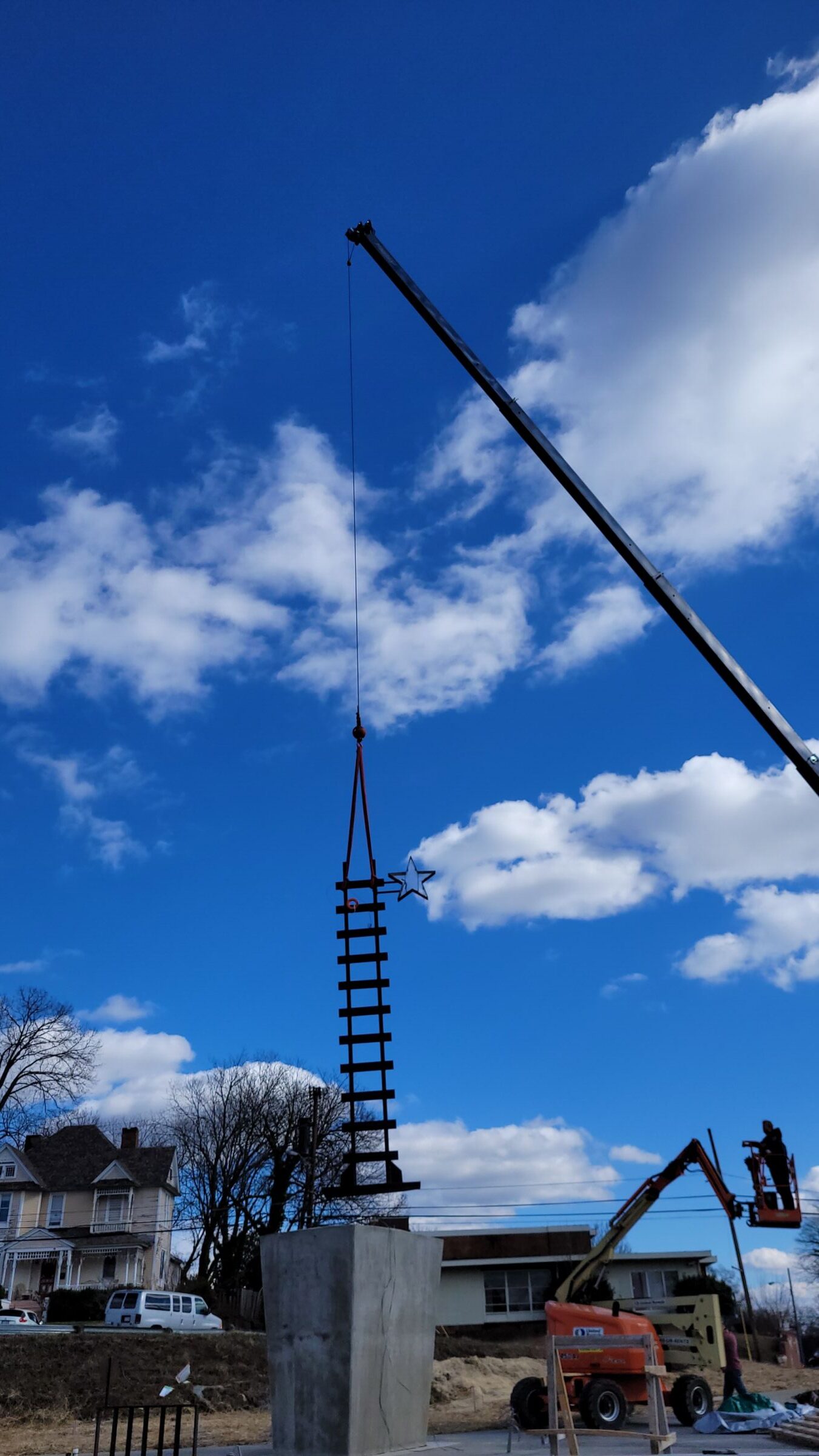

2024
The Downtown Greenway entered its final stages with a groundbreaking for the Western Branch, the last mile of the project. A call for artists for the Market + Branch public art project promised to add even more cultural richness to the trail. Stream restoration work on the College Branch Stream highlighted the project’s environmental benefits. As the Downtown Greenway featured prominently in tourism materials and a new book about North Carolina trails, it was clear that what began as a local project had become a point of pride and attraction for the entire region.
- Installation of new solar-powered lights at Morehead Park.
- The new Downtown Greenway website launched in November.
- The Downtown Greenway served on the Steering Committee for the Feasibility Study for the East Greensboro Greenway.
- Additional part-time staff including two maintenance crew members and one programming assistant were hired by the City of Greensboro’s Parks & Recreation Department.
- The Downtown Greenway was featured in, “Trails & Treats: A Hiker and Runner’s Guide to Great Trails and Good Eats in North Carolina” by Palmer McIntyre and Hollis Oberlies.
